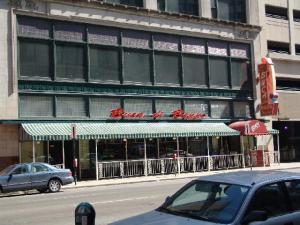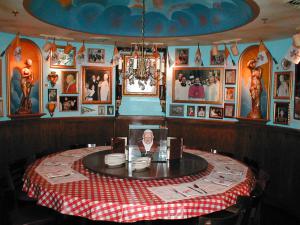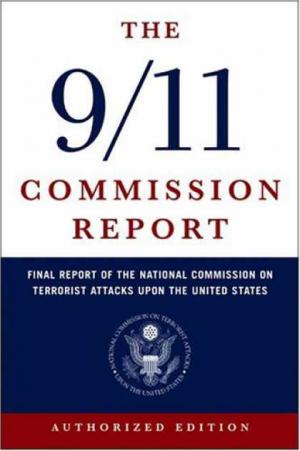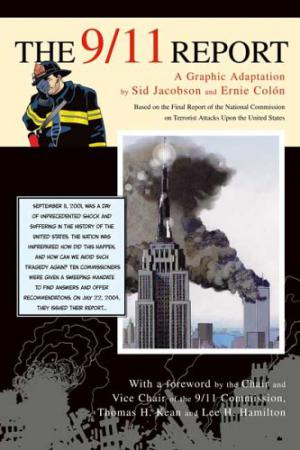Serendip is an independent site partnering with faculty at multiple colleges and universities around the world. Happy exploring!
Towards Day 17: Adapting Graphically

Course Notes by Aya
N.B.: omitted assigning notetakers for this week!
(volunteers for today and Thursday??)
I. What I learned (of relevance to our shared project) in Indianapolis: how to find your own Buca di Beppo restaurant (or: Anne and Alice get taken in...)
 |
 |
Also some good quotes from the conference:
"The real is that which resists”
(consider wood in relation to the ax...Bruno Latour)
[refusing the "old naive old naïve division between "the real and the representation"]: "language is not an abstract representation, but a material entity that DOES STUFF, a functioning, orienting TOOL" (Hugh Crawford)
most trad’l theories of reading focus on comprehension:
how to understand a text and construct meaning--
but how do you experience a text, feel what you are reading? empathic reading demands an infusion, being affected / controlled by text , vs. critical reading, which endistances and controls: a la Sontag’s “revenge of intellect on art” (Pierre-Louis Patoine)
much more:
Karen Barad on our being part of the nature we try to understand, refusing to "contain queerness" @ the microscopic/quantum level
Katherine Hayles on distant reading/machine reading/the porous boundary between "pattern recognition and interpretation," the need for "expanded literacies of writing and reading," and "a thorough re-thinking of literary studies to include digital culture" (=comparative media studies?); re-working content, but also "moving to a model of the classroom that is studio based," w/ students working as researchers...
Normal.dotm
0
0
1
10
58
Bryn Mawr College
1
1
71
12.0
0
false
18 pt
18 pt
0
0
false
false
false
II. coursekeeping
what did I miss?
ckosarek: I’d like to look at the effectiveness of our self-teaching. All said, I think we managed ourselves pretty well. Yes, we did have our awkward silences, but J did a pretty good job for standing in for Prof. A. Also, since it took us a while to figure out how to fix the computer, we were forced to discuss without the guide of the online notes. Our midterm evaluations seemed to have taken an effect, as we didn’t get “stuck” like we have in the past (i.e. what is real?). If a class is invested in the material (as we certainly are, having designed our own syllabus), then perhaps the line between teacher and student disappears.
other reflections on this experience?
* am just beginning to work my way through your papers (platano, maht91, ckosarek, veritatemdilexi, SandraG, Owl, need to re-post on their blog, NOT the course forum)
* for Thursday, finish "The 9/11 Report" (if you haven't already)
III. what more is there to say about Tarnation?
Aya: I really understand how disjointed and almost non-narrative parts of the film were but at the same time that engaged me a lot more than "A Thin Blue Line" did, where I felt like the narrative weight was imposed onto the story line, a story line that really could never reach a final conclusion. There was no conclusive element or evidence to work with but at the same time, the film really was trying to make a specific argument.
On the other hand "Tarnation" really just seems to me like an exploration, a search for an answer or maybe just a search for the right questions to ask. I don't think it that the film always works. I think Tarnation could have made use of some outside information. Some doctors talking about shock treatments perhaps. The sustained vision of Caouette is brilliant but at the same time as exhausting to the audience as it must have been to the filmmaker himself ...
but I buy this story a lot more than I bought "F is for Fake" or "War of the Worlds" or even "A Thin Blue Line". For me, the personal stories, the ones told by the authors who have experienced the events they are relating are more interesting--and I trust them more than I trust generalities.
SandraG: In class on Thursday we discussed how people have different realities based on their personal interpretations of what is "real" .... I was not easily dissuaded from my original opinion .... This showed me the power of constructed truths and how the only thing that's important is if you believe it, not what other people think.
IV. a pause to do some generalizing: what has watching these 3 films (and listening to the radio play) taught us about non-fiction? what has looking @ moving pictures taught us about PROSE? what difference does GENRE make in our perceptions and evaluations?
V. beginning (again!) w/ the fact of adaptation: cf. the covers-->
 |
 |
let's talk about the form, esp. in comparison with Fun Home: what does this graphic adaptation DO? (or: what do you know now you didn't before...?) and HOW does it do it?
Owl: what's compelling about it, is that it relates words (which themselves are limiting) to the images we all know. I like that it gives the reader an image of what occurred ... before it explains the history behind the day itself .... it doesn't make the reader ponder the author's intentions
FatCatRex: I can't help but think about the way in which this narrative ... is *still* a constructed piece of non-fiction ... it was hard for me to NOT read this as an anthropology major and say .... How do we know what REAL terrorism is? Who decides that and how? ... Once again we learn that our version of 'real' and 'fact' is just that--one version ... I couldn't shake this question of cultural relativism, especially after our time working with the definitions of words and terms reference sources. We limit ourselves linguistically and culturally and each played and plays a huge role in the global order and potentiality for ongoing terrorist attacks on United States soil.
pfischer: the graphic adaptation of the 9/11 report was able to crystallize and sharpen my muddled understanding of 'interagency miscommunications' by laying out scenarios, such as the panel on page 40 ... the visual contextualization and even body language of the drawn characters and thought bubbles was helpful for me. However, that raises the question if the authors did take too much artistic liberty with the book .... Does their subjective interpretation of the report, which was itself a fact-finding exercise, make the graphic representation any less a work of non-fiction? Does the visual element add or detract from its "truth-telling" mission? In the foreward of the book, the authors of the original 9/11 report ... "commend the talented graphic artists of this edition for their close adherence to ... the original Commission report" ... Is 'close adherence' close enough? ... graphically communicating the spirit and tone of written words requires different processes of interpretation and creation that I think we really need to consider.
from the conference:
Friday night plenary by Jay Hosler,
“Science Comic Books as Agents of Stealth Education”:
science depends desperately on images --
graphs, figures, drawings -- as a powerful way to convey an idea: perceived rather than received information, constructing visual explanations
Scott McCloud defines comics as "sequential art":
you put two images into 1 idea, and “closure” happens in the gutter
comic panels fracture both time and space, offering a jagged, staccato rhythm of unconnected moments --
but closure allows us to connect these moments and
mentally construct a continuous, unified reality:
the sequence of images map out a process
iconography/vocabulary of comics:
most are not photorealistic--
eye movements focus on basic components of an image
the brain keys in to simple images:
caricatures are more easily identified than a real person
comics facilitate rapid access to received information;
function as an intermediate step to difficult concepts
see ComicBookSyllabus.com, a disciplinary list
Normal.dotm
0
0
1
12
74
Bryn Mawr College
1
1
90
12.0
0
false
18 pt
18 pt
0
0
false
false
false


